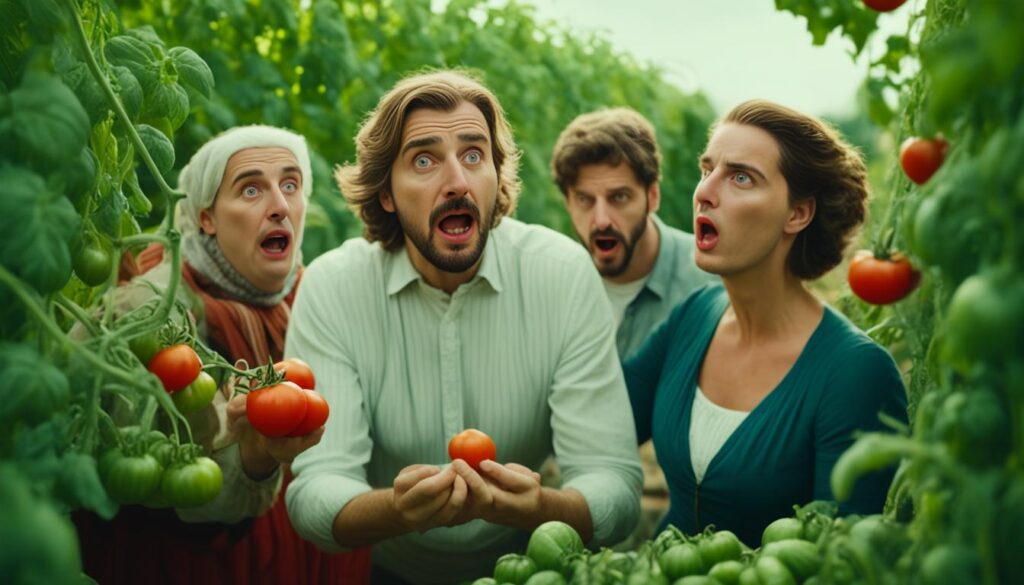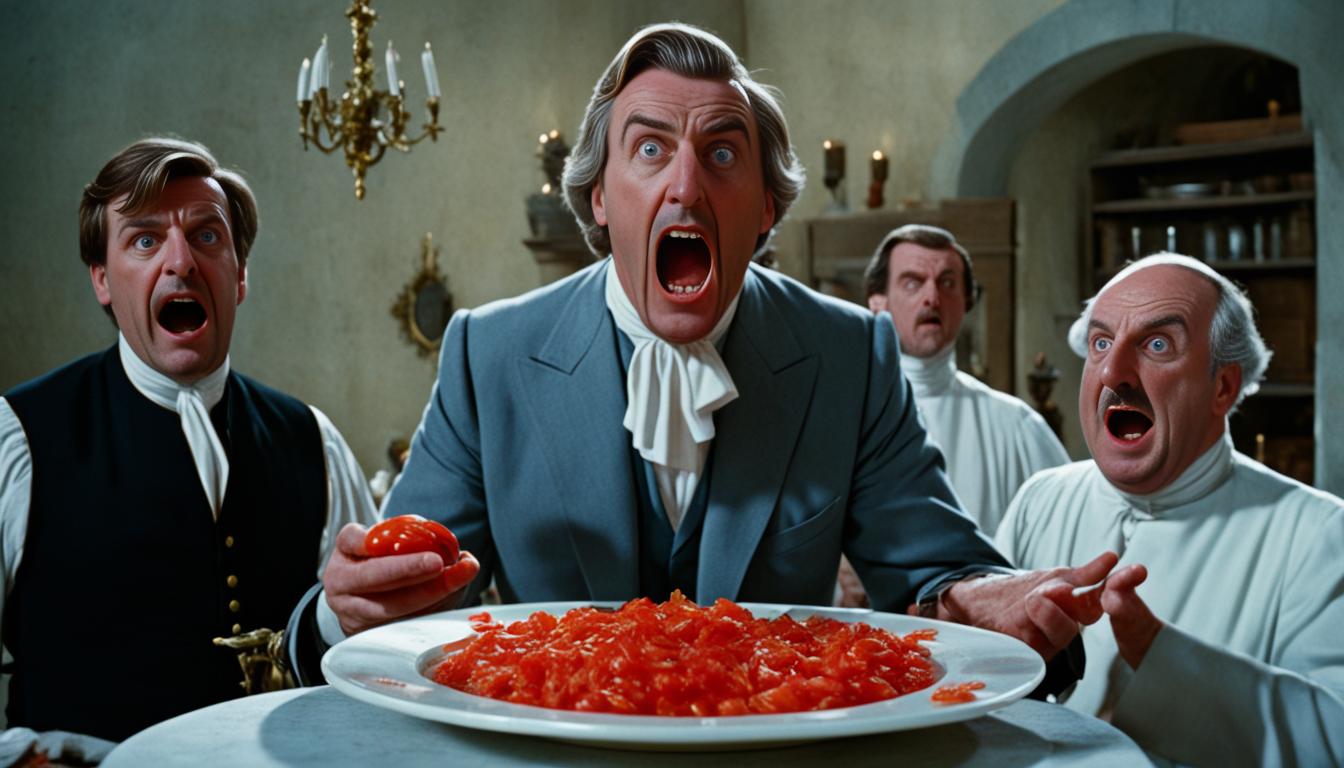In the late 1700s, Europeans feared tomatoes. They called them “poison apples.” This strange belief spread quickly. People avoided the bright red fruit due to various factors.
The tomato’s link to the nightshade family caused concern. Nightshades contain toxic compounds called tropane alkaloids. This fueled the misconception about tomatoes being dangerous.
Italian herbalist Pietro Andrae Matthioli added to the fear. He classified tomatoes as nightshades and mandrakes. Mandrakes were thought to have aphrodisiac properties.
Wealthy Europeans got sick after eating tomatoes. But lead poisoning from pewter plates was likely the cause. Still, tomatoes got the blame. This belief stuck around for a long time.
In cooler climates, people grew tomatoes just for looks. This lasted until the late 1800s. Meanwhile, hotter regions like Mexico enjoyed eating tomatoes.
Key Takeaways
- In the late 1700s, Europeans widely believed tomatoes were poisonous, nicknaming them “poison apples.”
- The tomato’s classification in the nightshade family, known for containing toxic compounds, fueled the misconception.
- Wealthy Europeans who fell ill after eating tomatoes were likely suffering from lead poisoning caused by their pewter plates, but the tomato was blamed.
- Italian herbalist Pietro Andrae Matthioli’s classification of the tomato as a nightshade and mandrake further perpetuated the belief.
- Tomatoes were primarily grown for ornamental purposes in cooler climates until the late 1800s due to the persistent tomato poison belief.
The Deadly Nightshade Connection
Tomatoes were wrongly thought to be toxic due to their link with deadly nightshade plants. They belong to the Solanaceae family, which includes poisonous plants like belladonna and henbane. These plants contain dangerous alkaloids that can cause hallucinations, paralysis, and even death.
Tomatoes were also mistaken for mandrakes, plants with a history of superstition. Mandrakes were thought to have aphrodisiac properties and were called “love apples” in the Bible. The strong odor of tomato leaves and stems added to the belief they were inedible.
While tomato leaves and stems contain toxic compounds, the fruit is safe to eat. However, the confusion about tomatoes’ relation to deadly nightshade and mandrake lasted for centuries. This led to widespread avoidance of the fruit in Europe.
Misconceptions Spread by Early Herbalists
John Gerard’s Herball from 1597 fueled the myth that tomatoes were poisonous. His plagiarized work described tomatoes as having a “ranke and stinking savour.” This description, plus the plant’s similarity to deadly nightshade, spread fear for centuries.

The Green Tomato Worm discovery in 1830s New York added to tomato fears. This large worm with a horn sparked wild rumors. Dr. Fuller, a physician, claimed it was as deadly as a rattlesnake.
Entomologist Benjamin Walsh later proved the tomato worm was harmless. However, the poisonous reputation of tomatoes lingered for many years.
In the mid-19th century, tomatoes finally gained acceptance in Britain and North America. Joseph Campbell, a fruit seller, ate tomatoes publicly to prove their safety. Gradually, tomatoes became popular and a staple in cuisines worldwide.
European Tomato Poisonous Belief
Aztecs grew tomatoes as early as 700 AD in Mesoamerica. They called it “tomatl” in their Nahuatl language. Spanish conquistadors brought tomato seeds to Europe in the 16th century.
Tomato seeds came to Italy from Peru. An Italian writer called them “poma Peruviana.” Italy started growing tomatoes around 1550. They were the first Europeans to use tomatoes in cooking.
People thought tomatoes were poisonous because they’re related to deadly nightshade plants. Early herbalists and doctors warned against eating tomatoes. This belief stopped many Europeans from eating tomatoes for centuries.
Some Europeans, especially in Italy and Spain, started to enjoy tomatoes. As more people ate them without getting sick, fears about tomatoes decreased. However, it took many years for tomatoes to become popular in European cooking.
Tomato’s Journey to Acceptance
Tomatoes were once thought to be poisonous in Europe and the U.S. Their acceptance was slow. In America, tomato farming for food began after the Declaration of Independence. Thomas Jefferson grew tomatoes in his garden as early as 1781.
The fruit arrived in Philadelphia in 1789 and Salem in 1802. This marked the start of its spread across America. New Orleans embraced tomatoes earlier, around 1812, due to French influence.
It took 20-30 more years for the Northeast to accept tomatoes. In 1897, Joseph Campbell’s condensed tomato soup became a household favorite. This boosted the tomato’s popularity in American cuisine.
In the late 1800s, people realized tomatoes were great for canning due to their acidity. This discovery allowed for year-round tomato availability. The once-feared fruit became a beloved ingredient in many dishes.

Leave a Reply